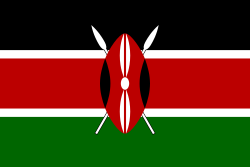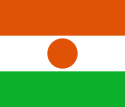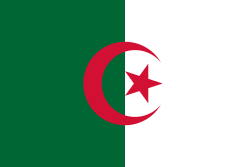Survival (Album)
| Survival | ||||
|---|---|---|---|---|
| Studioalbum von Bob Marley & the Wailers | ||||
Veröffent- | ||||
| Label(s) | Tuff Gong/Island Records | |||
Format(e) | LP, MC, CD | |||
Titel (Anzahl) | 10 | |||
38:02 | ||||
| Besetzung |
| |||
Bob Marley & the Wailers, Alex Sadkin | ||||
Studio(s) | Tuff Gong Recording Studio in Kingston (Jamaika) | |||
| ||||
Survival ist ein Reggae-Album der jamaikanischen Reggaelegende Bob Marley und seiner Band The Wailers. Es wurde am 2. Oktober 1979 veröffentlicht. Marley ruft im Song Africa Unite zur panafrikanischen Solidarität auf. Zimbabwe ist eine aufwühlende Hymne für das wenig später befreite Rhodesien. Der Song wurde im Rahmen der Unabhängigkeitsfeier von Simbabwe 1980 von Marley aufgeführt, unmittelbar nach der offiziellen Unabhängigkeitserklärung. Somit gilt Marleys Zimbabwe als inoffizielle Nationalhymne Simbabwes.
Survival hieß zuerst Black Survival, um die Dringlichkeit der afrikanischen Einheit zu unterstreichen, aber der Name wurde gekürzt, um Fehlinterpretationen des Albumthemas zu verhindern. Marley plante ursprünglich, Survival als ersten Teil einer Trilogie zu veröffentlichen, gefolgt von Uprising (1980) und Confrontation (1983, posthum).
Das Album wurde in Afrika teilweise zensiert (so wurden die Platten mit Messern auf Anordnung der Regierung zerkratzt). Die Kolonialmächte, vor allem Großbritannien und Frankreich, wollten damit verhindern, dass die kämpferischen Texte die schwarzen Einheimischen zu Revolten und Aufständen verleiten.
Titellisten
Survival (LP, MC, CD)
- So Much Trouble In The World – 4:00
- Zimbabwe – 3:49
- Top Rankin’ – 3:09
- Babylon System – 4:21
- Survival – 3:54
- Africa Unite – 2:55
- One Drop – 3:52
- Ride Natty Ride – 3:53
- Ambush In The Night – 3:14
- Wake Up And Live – 4:58
Survival (CD) (The Definitive Remasters, 2001):
- So Much Trouble In The World – 4:00
- Zimbabwe – 3:51
- Top Rankin’ – 3:10
- Babylon System – 4:21
- Survival – 3:53
- Africa Unite – 2:54
- One Drop – 3:51
- Ride Natty Ride – 3:50
- Ambush In The Night – 3:12
- Wake Up And Live – 4:58
Bonustrack:
- Ride Natty Ride (12″ Mix) – 6:23
Survival (LP, 2015)
- So Much Trouble In The World
- Zimbabwe
- Top Rankin’
- Babylon System
- Survival
- Africa Unite
- One Drop
- Ride Natty Ride
- Ambush In The Night
- Wake Up And Live
Cover
Auf dem Cover sind achtundvierzig Flaggen abgebildet, davon 47 afrikanische sowie jene Papua-Neuguineas, das in Ozeanien liegt.
Es gibt vier afrikanische Länder, deren Flaggen fehlen: Kap Verde, die Komoren, Libyen, und Südafrika (Namibia hatte keine eigene Flagge, weil es zu der Zeit von Südafrika verwaltet wurde.) Die Flaggen des Réunion und Westsahara erschienen auf einem Poster, das dem Album beilag.
Weblinks
Auf dieser Seite verwendete Medien
Flagge von Senegal
Flagge Guinea-Bissaus
Flag of Mauritania, adopted in 2017. The National Assembly added red stripes to the top and bottom edges to represent “the blood shed by the martyrs of independence”.
Flag of São Tomé and Príncipe
Flag of Tunisia until 1999.
The flag of the Ethiopian Empire with the Lion of Judah in the center
(c) Zscout370 in der Wikipedia auf Englisch, CC BY-SA 3.0
The first flag of the nation of Lesotho, used from 1966 until 1987. Elements from this flag can be seen on the current national flag, in use starting in 2006.
Flag of ZAPU
Flag of the People's Republic of Congo between 1 January 1970 - 10 June 1991
The former flag of Rwanda (1961–2001). Commonly refered to as the "R" flag.
Flag of Cameroon, 1961-75
The Egyptian flag (1972-1984). Also the flag of Libya (1972-1977) and Syria (1972-1980), when the three countries formed the nominal “Federation of Arab Republics”. (For a map of the federation, see Image:Esl.PNG.)
The Arab text in the scroll held by the “Golden Hawk of Qureish” reads Arabic اتحاد الجمهوريات العربية, ittiħād al-jumhūriyyāt al-`arabiyya, i.e. the Federation (literally “Union”) of Arab Republics — in a quasi-Kufic script (in its original form, with a very ornamental letter dal د).
















































